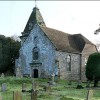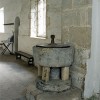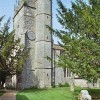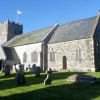Jonathan Cheeseman was an agricultural labourer, sometimes shepherd; a man of little substance. He was born in 1794 in the Dorset village of Litton Cheney, but even before his marriage in 1817 he had embarked on a series of moves from parish to parish in a small area to the east of Dorchester. It was there, at Tincleton, in the summer of 1821 that Jonathan’s wife died. His feelings on the loss of his wife after just four years of marriage were threaded with concern. How could he both work and care for his two young sons left motherless?
Whatever the immediate solution, Jonathan’s situation was relieved when two years later he remarried. His second wife was Amelia Vincent, some four years younger than Jonathan and aged about twenty-five at the time of their marriage in May 1823. Within a year Amelia bore Jonathan a daughter. Four years later, in 1828, Amelia gave birth to a son, William. Unsurprisingly William would in due course become an agricultural labourer like his father. He too at times would work as a shepherd.
As the previous century had approached its end many rural communities had begun to lose their stability. Changes in agricultural practices and mechanisation meant that Jonathan had grown up at a time when rural labour was becoming a commodity and agricultural employment increasingly insecure. This insecurity combined with falling wages, brought social unrest and discontent to the countryside. Jonathan’s periodic changes of home and employer possibly owed something to his temperament, but almost certainly owed as much to the conditions of his time.
At William’s birth the Cheesemans were living at Piddletown, but shortly afterwards they moved to Tolpuddle, where in 1830 Amelia had a second daughter. It is not improbable that the family was still in Tolpuddle during the historic events there in 1834 and possibly was acquainted with one or more of the “martyrs” or their families. Where the Cheesemans lived in the years that immediately followed is not known, only that they were included in the Athelhampton 1851 census, but finally they settled at Blacknoll at Winfrith Newburgh.
Blacknoll lies to the north of Winfrith village, at the edge of what was then a tract of wild heath. As the land rises towards the modest height of Blacknoll Hill, there is a scattering of cottages, a few forming a row. They housed a close-knit community; several families representing a large proportion of its number. It was for the most part a community of rural labourers and their families, largely uneducated and poor. Many of the cottages were small, one-up-one-down dwellings that sometimes housed a family with perhaps half a dozen children. A few of the Blacknoll families owned or leased small parcels of land, but if the inhabitants of Blacknoll were not in the desperate plight suffered by many people, this was a place untouched by prosperity. Poverty in the countryside was acute and the produce from a garden or the benefit of additional occasional work could make a critical difference to the household economy.
Already established at Blacknoll was the family of James and Hannah Hibbs, both of whom had their roots in Winfrith. Like Jonathan Cheeseman, who was his senior by seven years, James Hibbs, was an unschooled agricultural labourer and for the Hibbs, as for the Cheesemans, daily existence was simple and rude.
It was in May 1823 (just forty-eight hours before the marriage of Jonathan and Amelia Cheeseman) that James Hibbs had married Hannah Cox. Their first child arrived within months of their marriage, but probably died in infancy. Almost seven years elapsed before the birth of their next known child. While it is not impossible that James Hibbs had been absent from home for a significant period, it is more probable that in the intervening years there were other children, untraced, who also had died as infants. However, even if seven years of the marriage had been barren, Hannah then gave birth with a remarkable regularity. In the years 1830 to 1844, she bore three daughters followed by five sons (one of whom died in 1845 at the age of four).
Then, after over twenty-four years of marriage, Hannah gave birth to her last child. It was a daughter, who was baptised at Winfrith on 3 October 1847. The child was given her mother’s name, Hannah. Sadly the mother did not live to see her new daughter grow out of infancy. At the end of 1849, at the age of forty-three, Hannah, James’ wife, died. The young Hannah was just two years old.
If initially the task of running the household and of caring for Hannah and the youngest of her brothers fell to one of the elder Hibbs daughters, it was not for long. By 1851, before Hannah was yet four, her sisters had left home, leaving James Hibbs inhabiting the cottage with his four surviving sons, aged between six and sixteen, and the three-year-old Hannah. It is difficult to speculate on the situation that prevailed in the Hibbs household and on the conditions under which Hannah spent her childhood. She received at most a perfunctory education and she remained illiterate (in contrast to her mother, who could at least write her own name). In these circumstances the freedom of childhood was short for Hannah and she was soon introduced to household chores.
In the next decade two of Hannah’s brothers left home and in 1860 her second-eldest brother died at the age of twenty-two and so by the end of 1860 there were just three persons in the Hibbs cottage, as there were in the Cheeseman household.
Jonathan and Amelia Cheeseman, aged sixty-six and sixty-two respectively, were living with their son William, aged thirty-three, but unmarried. William was then working as an agricultural labourer. Nearby the fifty-nine-year-old widower James Hibbs was living with his son, John, aged nineteen and his daughter, Hannah. Although only fourteen, Hannah had long become accustomed to looking after the house and the two men. A little over three years later the Hibbs household was to be the setting for an event that would shape not only Hannah’s life, but also that of William Cheeseman.
In the early part of 1864 Hannah, sixteen years old, became pregnant. For a young woman in Hannah’s social situation her condition would have been as much a matter of practical concern as of shame. For families living near subsistence level a pregnant daughter and then young mother would not have been welcomed and the child represented an extra burden, another mouth to feed. The parish too would take an interest. An unmarried mother and her child could become a drain on the meagre parish chest and an attempt would be made to discover the identity of the father and to ensure that he took responsibility for maintenance. In many cases, of course, the imminent arrival of a child provoked a marriage (usually with the father if he were in a position to marry). This solution, however, was not available to young Hannah. The father of her child was her own brother, John. At the time he was twenty-one years of age.
What was the relationship that led to Hannah’s pregnancy? While it is not impossible that the young woman encouraged her brother, or at least did not object to his attentions, it is more likely that John simply forced himself upon her. It is possible that this was a situation that Hannah had endured or accepted for some years. However, such speculations are of little value. What was important was the situation and its repercussions.
Hannah was sent to the Union Workhouse at Lady St. Mary, Wareham. In that institution, isolated from her family and community and among strangers, mostly paupers, some insane, Hannah, then just seventeen years old, awaited the birth of her first child. Her immediate apprehension was compounded by thoughts of the bleak prospect that lay before her. She had slipped even from her lowly place in society and she would have been aware that many young women in her position would face a future of misery and abuse, always at the mercy of others. In addition the child she carried was her own brother’s.
What were Hannah’s feelings towards her brother and father? Did she feel resentment? Did she feel abandoned? Whatever her thoughts and feelings, they were at that moment all she possessed.
To be continued…….



